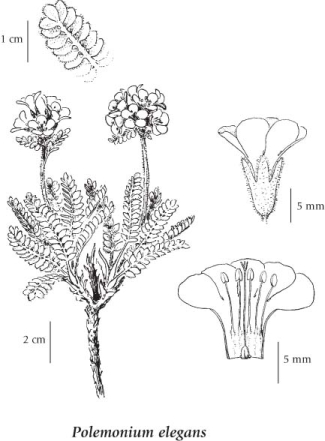Polemonium elegans Greene
elegant Jacob's-ladder (elegant polemonium)
Polemoniaceae (Phlox family)
Introduction to Vascular Plants
elegant Jacob's-ladder (elegant polemonium)
Polemoniaceae (Phlox family)
Introduction to Vascular Plants
